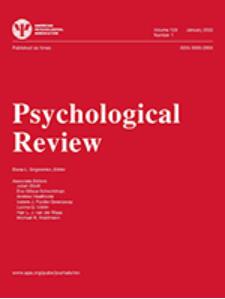崩溃路径:自闭症崩溃的多学科解释。
IF 5.8
1区 心理学
Q1 PSYCHOLOGY
引用次数: 0
摘要
自闭症的崩溃是由感觉和认知压力源引起的强烈沮丧和身体暴力的发作。尽管自闭症患者中情绪崩溃的发生率很高,但这种反应背后的神经机制还没有得到很好的理解。迄今为止,这阻碍了在传统药物之外的专门治疗干预的进展,这限制了它们的频率和严重程度。在这里,我们的目标是发起一个跨学科的对话,对病因的感觉熔化。在此过程中,我们将崩溃定义为潜在的慢性过度警觉和对客观良性压力源的急性过度反应的结果,这些压力源是由岛叶皮层的差异驱动的,岛叶皮层是一个多模式整合中心,可适应自主状态和行为以满足环境需求。我们首先从神经生理学的角度讨论崩溃,并认为脑岛内的低连通性导致自闭症患者的迷走神经戒断和交感神经过度觉醒,从而导致慢性高警惕性,并降低自闭症患者在经历崩溃之前可以忍受的压力源阈值。接下来,我们转向神经心理学,并提供证据表明,当敏锐地评估环境中危险的模糊迹象时,崩溃反映了环境证据,特别是社会线索的整合方式的差异-这一过程被称为神经感觉。最后,我们建立在自闭症的当代预测编码的基础上,认为崩溃可能最终是由感觉衰减和内感受层次内连贯的深度推理的差异驱动的,可能与婴儿时期的催产素缺乏有关。在整个过程中,我们综合每个角度来构建一个多学科的,基于孤岛的熔毁模型。(PsycInfo Database Record (c) 2025 APA,版权所有)。本文章由计算机程序翻译,如有差异,请以英文原文为准。
The meltdown pathway: A multidisciplinary account of autistic meltdowns.
Autistic meltdowns are fits of intense frustration and often physical violence elicited by sensory and cognitive stressors. Despite the high prevalence of meltdowns among autistic individuals, the neural mechanisms that underlie this response are not yet well understood. This has thus far hampered progress toward a dedicated therapeutic intervention-beyond traditional medications-that limits their frequency and severity. Here, we aim to initiate an interdisciplinary dialogue on the etiology of sensory meltdowns. In doing so, we frame meltdowns as a consequence of underlying chronic hypervigilance and acute hyperreactivity to objectively benign stressors driven by differences in the insular cortex-a multimodal integration hub that adapts autonomic state and behavior to meet environmental demands. We first discuss meltdowns through the lens of neurophysiology and argue that intrainsular hypoconnectivity engenders vagal withdrawal and sympathetic hyperarousal in autism, driving chronic hypervigilance and reducing the threshold of stressors those with autism can tolerate before experiencing a meltdown. Next, we turn to neuropsychology and present evidence that meltdowns reflect a difference in how contextual evidence, particularly social cues, is integrated when acutely assessing ambiguous signs of danger in the environment-a process termed neuroception. Finally, we build on contemporary predictive coding accounts of autism to argue that meltdowns may be ultimately driven by differences in sensory attenuation and coherent deep inference within the interoceptive hierarchy, possibly linked to oxytocin deficiency during infancy. Throughout, we synthesize each perspective to construct a multidisciplinary, insula-based model of meltdowns. (PsycInfo Database Record (c) 2025 APA, all rights reserved).
求助全文
通过发布文献求助,成功后即可免费获取论文全文。
去求助
来源期刊

Psychological review
医学-心理学
CiteScore
9.70
自引率
5.60%
发文量
97
期刊介绍:
Psychological Review publishes articles that make important theoretical contributions to any area of scientific psychology, including systematic evaluation of alternative theories.
 求助内容:
求助内容: 应助结果提醒方式:
应助结果提醒方式:


